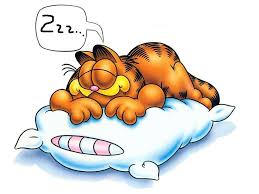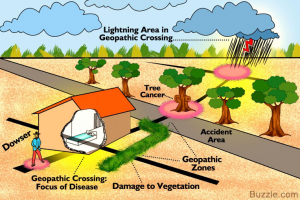Sleep issues are an epidemic today.

The colour of light
Sleep issues are an epidemic today. Sleep is one of the key foundations of health, but getting enough good quality sleep can be difficult. Beyond the obvious causes of poor sleep like obstructive sleep apnea, blood sugar dysregulation, and an uncomfortable mattress, many people’s sleep problems today are caused by non-native electromagnetic fields (nnEMF).
Our circadian biology (body clock) is governed by the sun: Specifically to the wavelengths of light that make it to earth during different times of the day. Blue light promotes wakefulness by suppressing melatonin production. The amount of blue light we receive from the sun peaks at high noon and decreases as the sun sets, changing to mostly red light. As the amount of blue light decreases, melatonin production increases, causing you to want to fall asleep when it gets dark.
Throughout most of human history, the only sources of light we had were the sun and campfires or candles (which produce mostly red and infrared light). We mostly followed the circadian rhythm of the sun, and sleep was not a problem. Since the invention of the light bulb, humans have had a source of blue light after dark.
Now with the widespread use of fluorescent and LED lighting, we have massive exposures to blue light at the wrong time of day. Every time you look at your bright blue LED TV, computer, or smartphone, your brain thinks that it is noon. If your brain thinks that it is noon, then melatonin production will be suppressed, and it will be difficult to sleep. This is why sleep quality can dramatically improve when you go camping, or live out in a rural area away from light pollution. If you live in a densely populated area, there are still things you can do to improve the quality of your sleep.
During the day, you want to spend as much time as you can under natural sunlight. Exposure to natural sunlight in the morning can help set the circadian rhythm (note: glasses and contacts will block UV light, which is important for signaling melatonin production). When indoors, choose incandescent or halogen light bulbs instead of fluorescent and LED. Fluorescent and LED lights emit an unnaturally high blue to red light ratio, while incandescent and halogen lights create a fuller spectrum of light, closer to that of the sun.
When the sun sets, exposure to artificial light should be limited as much as possible. Candle light can be used, and red light bulbs can be installed. Programs like f.lux and IRIS can decrease the amount of blue light emitted from computer screens. IRIS is more versatile than f.lux, and is available for smartphones as well. If you have any exposure to artificial light after dark, blue-blocking glasses may be beneficial.
Some inexpensive glasses work well, but there are more expensive glasses that are specifically designed to block out the wavelengths of light that suppress melatonin that work even better. Blue-blocking glasses should be used at least an hour or two before going to sleep.
Supplementing with melatonin may also be an option, but should only be undertaken under the supervision of a qualified health professional. Melatonin can also cause you to wake up due to its brain-detoxing effect, but different strategies can be used to mop up the mobilized toxins to offset this side effect.
The sleeping location should also be pitch-black, to the point where you cannot see your hand in front of your face. Blackout curtains may be needed, and even small sources of light like smoke detectors need to be covered. Low-blue emitting night lights are available and are a good option to put in the bathroom for nighttime use.
Microwave radiation (MR) is another form of nnEMF that negatively impacts sleep.
MR has been shown to decrease melatonin production and deep sleep. Anything that creates MR should be turned off at night (preferably during the day as well). This includes WIFI routers, cell phones, and any “smart” appliances. Many devices will still emit MR when they are turned off and need to be turned off at the power point. Protection from MR sources from outside the home may also be needed. Silver-lined sleep canopies that block MR are expensive, but a great investment (make sure to get a bottom sheet as well so that the bed is fully enclosed). It is best to hire a professional building biologist to measure MR levels to determine what kind of canopy you need for adequately blocking MR. Other options are available from Orgone Effects, Australia or https://www.lifeenergysolutions.com/.
Magnetic fields, electric fields, and dirty electricity from appliances and the wiring in your home can also affect sleep quality. At a minimum, there should be no electrical appliances plugged in the bedroom while you sleep. Electronically adjustable bed frames create a large magnetic field and need to be unplugged at night as well, as should electric blankets.
There are native EMFs that come from the earth that are beneficial to our health.
However, there can be disturbances in these fields called geopathic stress zones that can disturb sleep. These come up through the earth from areas of underground water, fault lines, and crossing water pipes. At the moment, there are no commercially available meters to detect geopathic stress zones, but there are energetic tests to find them. Dowsing rods or kinesiology are some methods to find geopathic stress zones. Cats will seek out hot spots to sleep, and dogs will avoid them. Geopathic stress zones are usually only 1-2 square feet in size, so moving the bed just a few feet can often be enough to avoid them.

Obviously, your sleeping surface is important to sleep quality. Metal bed frames and metal spring mattresses are not recommended because they can act like an antenna for EMFs. Memory foam mattresses don’t contain metal but can act like a sponge for toxins released from your skin and sweat. Memory foam also off-gasses toxic chemicals. Though they can be expensive and may not be as durable as some commercial mattresses, organic mattresses made from latex or other natural substances are best for optimizing sleep.
Obstructive sleep apnoea can easily be ruled out as a cause of poor sleep, as sleep studies are usually covered by insurance and can now be done at home in addition to at clinics. Home sleep studies are preferred because sleep clinics introduce many variables like nnEMF. For obvious reasons, it is best to do a sleep study in the actual environment that you sleep in.
Low blood sugar and insomnia.
This typically presents itself as waking up around 2-3 AM. Dietary changes like eating protein and fat before bed can help curb this and some people find that eating a tablespoon of raw honey helps provide enough glucose for a full night’s sleep. If you have any concerns, consult a qualified natural health practitioner for assistance in balancing your blood sugar levels.
Lowering levels of nnEMF in the home environment can reduce or resolve sleep problems for most people. However, there can be other more complicated reasons for sleep problems that need to be addressed by a healthcare professional. Prescription sleep medications are short-term solutions that should only be used as a last resort.
Based on research and findings published by Dr Klinghardt, MD PhD
